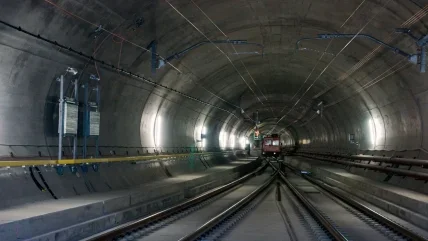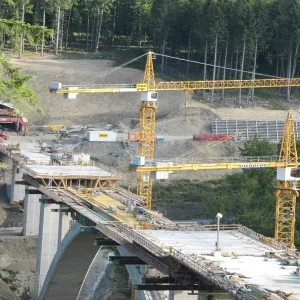
Inflation, characterised by a sustained increase in the general price level of goods and services, poses significant challenges to the tunnelling industry. Rising inflation can drive up construction costs, escalate project budgets, and erode profit margins, thereby impacting the viability and profitability of tunnelling projects. To insulate from the risk of inflation, stakeholders in the tunnelling industry must adopt proactive strategies to manage costs, mitigate risks, and enhance project resilience. This article examines the impact of inflation on the tunnelling industry, explores the underlying causes, and outlines strategies for insulating against inflationary pressures.
Understanding the Impact of Inflation:
Inflation affects the tunnelling industry in various ways, including:
- Escalating Construction Costs: Inflation leads to higher costs of labour, materials, equipment, and fuel, which are major components of tunnelling project budgets. Escalating construction costs can strain project finances, reduce profitability, and affect the feasibility of tunnelling projects, especially those with fixed-price contracts or tight budgets.
- Uncertainty and Volatility: Inflation introduces uncertainty and volatility into project planning and budgeting processes, making it challenging for stakeholders to accurately forecast costs and revenues. Fluctuations in inflation rates can impact project cash flows, financing options, and investment decisions, affecting project timelines and returns on investment.
- Contractual Disputes: Inflationary pressures can lead to disputes between project owners, contractors, and suppliers over cost escalations, change orders, and contract terms. Disputes may arise regarding the allocation of inflation-related risks and liabilities, leading to delays, claims, and legal proceedings that disrupt project delivery and increase project costs.
- Financing Constraints: Rising inflation can affect the availability and cost of financing for tunnelling projects, as lenders may demand higher interest rates or impose stricter lending criteria to compensate for inflation-related risks. Financing constraints can delay project financing, increase borrowing costs, and limit access to capital for project development and construction.
Strategies for Insulating Against Inflationary Pressures:
To insulate from the risk of inflation, stakeholders in the tunnelling industry can implement various strategies and measures:
- Indexation and Escalation Clauses: Include indexation and escalation clauses in contracts to adjust contract prices and payments in response to changes in inflation rates. Indexation clauses tie contract prices to specific inflation indices, such as the Consumer Price Index (CPI) or Producer Price Index (PPI), while escalation clauses allow for periodic price adjustments based on predetermined escalation factors.
- Long-Term Contracts and Agreements: Secure long-term contracts and agreements with clients, suppliers, and subcontractors to provide stability and predictability in project pricing and cash flows. Long-term agreements with fixed-price provisions or price ceilings can help mitigate the impact of inflation on project costs and revenues.
- Cost Management and Contingency Planning: Implement robust cost management and contingency planning processes to anticipate and mitigate inflation-related risks throughout the project lifecycle. Develop realistic cost estimates, establish contingency reserves, and monitor project costs closely to identify cost overruns and implement corrective actions proactively.
- Hedging and Risk Management: Utilise financial hedging instruments, such as inflation swaps, futures contracts, and options, to hedge against inflation-related risks and volatility. Hedge exposure to inflation-sensitive inputs, such as labour, materials, and fuel, to lock in prices and protect against cost increases during the project execution phase.
- Value Engineering and Optimisation: Apply value engineering and optimisation techniques to identify cost-saving opportunities, improve efficiency, and optimise resource allocation in tunnelling projects. Explore alternative construction methods, materials, and design solutions that offer cost benefits and mitigate the impact of inflation on project budgets.
- Collaboration and Supply Chain Management: Collaborate with suppliers, subcontractors, and other project stakeholders to manage supply chain risks and mitigate inflationary pressures. Establish strategic partnerships, negotiate favourable pricing agreements, and diversify the supplier base to enhance resilience against supply disruptions and price fluctuations.
- Inflation-Linked Financing: Explore inflation-linked financing options, such as inflation-indexed bonds, inflation-linked loans, and inflation-protected securities, to raise capital for tunnelling projects. Inflation-linked financing instruments provide protection against inflationary erosion of purchasing power and offer investors a hedge against inflation-related risks.
- Economic Forecasting and Scenario Analysis: Conduct economic forecasting and scenario analysis to assess the potential impact of inflation on tunnelling projects and develop contingency plans accordingly. Monitor key economic indicators, such as inflation rates, interest rates, and commodity prices, to anticipate inflationary trends and adjust project strategies in response.
Case Studies and Best Practices:
To illustrate the effectiveness of these strategies, consider the following case studies and best practices from the tunnelling industry:
- Gotthard Base Tunnel, Switzerland: The Gotthard Base Tunnel project utilised long-term contracts with escalation clauses to manage inflationary risks and ensure cost predictability throughout the project duration. Indexation clauses linked contract prices to inflation indices, providing protection against cost escalations and preserving project profitability.
- Crossrail Project, London, UK: The Crossrail project implemented value engineering and optimisation initiatives to mitigate inflationary pressures and optimise project costs. Cost management processes, such as benchmarking, value analysis, and value management workshops, helped identify cost-saving opportunities and enhance project efficiency.
- East Side Access Project, New York City, USA: The East Side Access project employed hedging strategies and risk management techniques to mitigate inflation-related risks and protect project finances. Financial hedging instruments, such as inflation swaps and interest rate derivatives, were used to hedge exposure to inflation and interest rate fluctuations, providing stability and certainty in project financing.
Conclusion:
Insulating the tunnelling industry from the risk of inflation requires a proactive and integrated approach that incorporates contractual mechanisms, cost management practices, financial strategies, and risk mitigation measures. By implementing indexation clauses, long-term contracts, cost management processes, and inflation-linked financing options, stakeholders can manage inflation-related risks effectively, preserve project profitability, and ensure the successful delivery of tunnelling projects in a dynamic economic environment.







